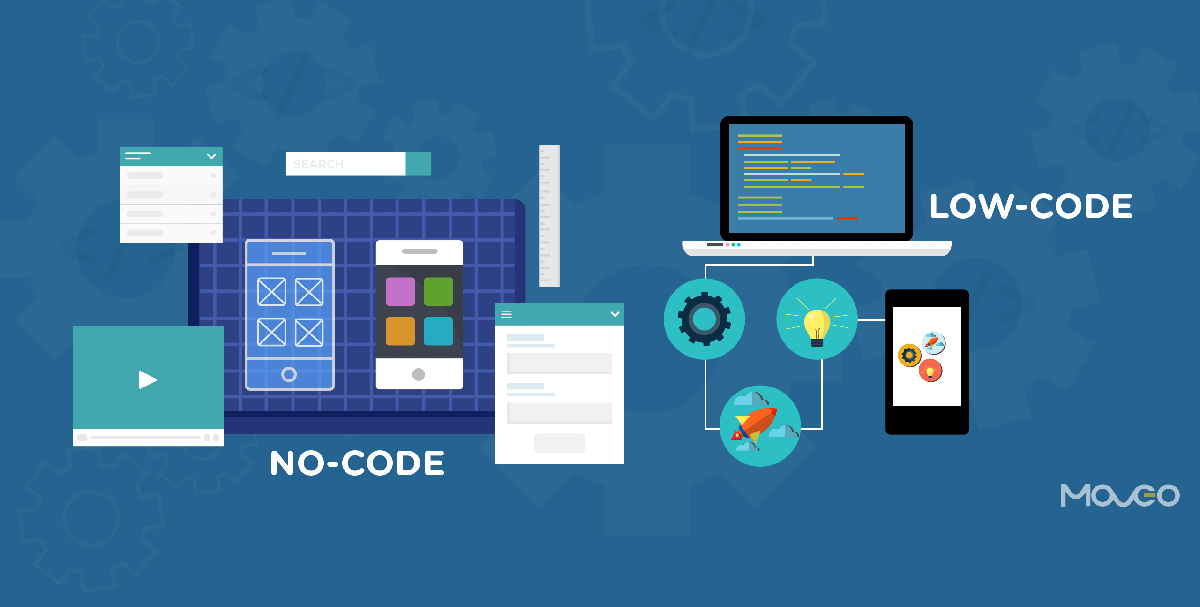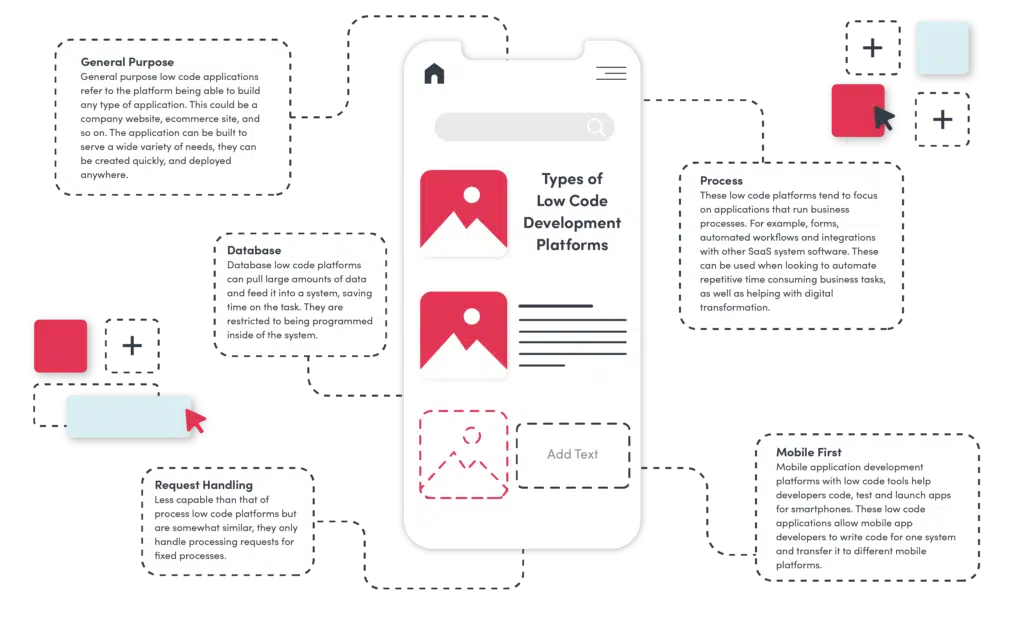Handy News On Picking Legacy application modernization with Low-code
Handy News On Picking Legacy application modernization with Low-code
Blog Article
Advantages Of Low-Code Application Development In Terms Of Speed
Visual Development Environment (VDE):
Drag-and-Drop Interfaces: Low-code platforms provide visual tools for designing applications. Developers can easily build an application using drag-and-drop elements without writing code.
Templates and Components that are pre-built: A lot of platforms that support low-code come with templates and components pre-built that allow developers to build prototypes quickly and create applications without starting completely from beginning from scratch.
Reduced Coding Requirements:
Automated Code Generation: Low-code platforms automatically generate the underlying code based on the visual models developed by developers. This reduces the requirement to manually code and accelerates development.
Reusable Components: Developers are able to make use of reusable components across various projects, which reduces the amount of time spent on writing and testing code.
Collaboration streamlined:
Low-code platform tools typically include testing, versions control, or deployment. This facilitates the seamless communication between teams.
Citizen development: By using user-friendly interfaces and reducing bottlenecks, which are usually caused by the limited availability of business users, developers and other users can contribute towards application development.
Rapid Iteration & Prototyping
Rapid Prototyping Developers are able to quickly build prototypes for ideas to be validated and feedback to be gathered which results in faster iteration.
Easy Modifications. The visual nature of low-code development makes it easier for users to update and modify their applications.
Pre-built Integrations:
API Integrations Low-code platforms have built-in connectors that work with the most popular APIs or services. They cut down the time it takes to connect external applications.
Data Integration: The instruments integrated in the software make it easier and speed up the process of linking databases, applications and data sources.
Scaling, deployment and deployment
One-Click-Deployment: A lot of Low-Code platforms provide one-click option for deployment. This reduces the time and effort needed to deploy an application.
Cloud-based solution: Cloud based low code platforms can handle infrastructure management and scaling. This lets developers concentrate on applications' logic, functions and features, rather than deployment logistics.
Overall, the advantage of developing low-code applications in terms speed lies in the ability of it to streamline and automate various aspects of the development process, which allows for rapid delivery of apps and faster adaptation to the changing demands. Take a look at the top rated Low-code Platform for application development hints for blog examples including azure sql server, rapid action development, push notifications android, cloud software applications, cross platform mobile dev, database in azure, rapid applications, rapid action development, cross platform mobile dev, developing mobile apps and more.
The Advantages Of Low-Code Development In Terms Of Scalability, Flexibility And Scalability
Low-code application development has many advantages when it comes to adaptability and scalability, which are vital to build applications that can adapt to business demands and change with the demands of business. Here are some of the major advantages Rapid scaling:
Cloud-Based Platforms: A lot of platforms that are low-code-friendly use cloud computing. They permit applications to scale smoothly with the cloud infrastructure. This allows businesses to handle more workloads without having to worry about server management.
Auto-Scaling Features - Built-in auto scaling capabilities automatically alter resources in accordance with the demands. This allows for continuous performance, even in peak times without any manual intervention.
Flexible Architecture:
Modular Application Design: A low-code platform promotes modular application design. Components can be independently evaluated, designed and scaled. This modularity allows for greater flexibility and makes it possible to update or expand certain parts of the application without affecting other parts.
Microservices Integrate: They allow applications to scale and be flexible because they can be built as a collection of services that are loosely connected.
Customizable Solution:
Extensibility: Low-code platforms usually allow for custom scripting and coding, which allows developers to extend the capabilities of their applications beyond that available out-of the-box. This lets businesses meet their own unique requirements.
Third-Party Integrations: The ability to integrate with third-party applications and APIs enables businesses to incorporate additional functionalities and services as needed, enhancing the application's capabilities.
Agile Development Deployment, Agile Development Agile Development:
Continuous Delivery and Deployment Low-Code Platforms facilitate agile methods by enabling continuous Integration and Continuous Delivery (CI/CD). This allows for the rapid deployment and updating of new features.
Iterative Design: Since low-code is an iterative procedure it is possible to incrementally improved and then scaled up. This allows for controlled growth, and minimizes the risks associated with large-scale modifications.
Resource Optimization:
Efficient resource management: Low code platforms optimize resources by offering tools for monitoring and controlling the performance of applications. This ensures resources are used efficiently and are easily scaled to meet the actual demands.
Load Balancing: Integrated load balancing features distribute workloads evenly across servers, enhancing the capacity of applications to handle large volumes of traffic while ensure the same performance.
Global Reach
Multi-Region: Platform deployments that use low-code are often supported across multiple geographies and allow businesses to provide users with low latency access to all users. This is of particular importance for applications with a worldwide user base.
Support for Localization. Built-in support to localize applications allows them to be easily adjusted to various languages, regional demands and enhances their flexibility across diverse markets.
Maintenance and updates
Simplified Maintenance: The visual and modular design of low-code programs simplify maintenance tasks making it possible for upgrades and bug fixes to be implemented quickly without a long period of downtime.
Version Control: Integrated versions control systems permit the safe release of rollbacks and updates. Versions from the past can be restored if they're required.
Cost Efficiency:
Low Development Costs: By cutting down on the amount of code required, low code platforms can cut down on development costs. This allows to increase the size of applications without increasing the development effort and expenditure.
Pay-As-You Go Models: A lot of low-code platforms offer flexible pricing models, like pay-as-you-go, which align costs to actual usage and growth, providing the flexibility to finance.
Low-code development offers businesses many advantages, including scalability flexibility, and flexibility. This enables them to create robust, adaptable and scalable applications. These platforms permit quick adaption to changing needs, efficient resource usage, and continuous advancement. This means that the applications are able to grow along with the company. Check out the top get more info for site info including application development platforms, low code platforms, lowcode no code, stored sql procedures, azure sql server, software for app development, develop cross platform mobile app, low code development platforms, rapid application design, rapid application design and more.
The Benefits Of Low-Code Development For Collaboration And Workflow
The low-code method of developing applications provides numerous advantages in terms of workflow and collaboration, which makes it a great choice for companies seeking to boost team productivity and speed up their development processes. Here are the major benefits: Improved Collaboration Across Functions:
Unified Development Environment. Low-code platforms let all team members collaborate in a single, integrated environment. This includes developers, business analyst and designers as well as stakeholder. This helps reduce the number of silos and enhances communication.
Visual Development Tools Low-code platforms are simple to use and have the drag-and-drop interface. This lets non-technical members of the team to be involved in the process of development and ensures that the business requirements can be gathered accurately.
Communication Enhancement:
Real-Time Collaborative Features: A lot of platforms using low-code have real-time collaboration features, such as comments, editing, and immediate feedback. These features help in the communication process and decrease time spent on back and forth discussions.
Shared Workspaces Teams can work together using shared workspaces. These workspaces allow them to review, edit and discuss project components.
Streamlined Workflow:
Built-In Project Management Tools: Low-code platforms usually include integrated project management tools that help teams plan and track their development projects. This includes task assignments, progress tracking, and deadline management.
Workflow Automation: Automating repetitive tasks and workflows will reduce mistakes and work, allowing employees to focus on more strategic work while increasing efficiency.
Speedier Iteration Cycles
Rapid Prototyping : Low-code platforms enable rapid prototyping. They also allow iterative and rapid development. This allows teams to create applications, test and refine them in shorter periods of time. This enables feedback to be quickly incorporated into the application as well as rapid enhancements.
Support for Agile Development: Supporting agile methodologies allow teams to be continuously working in sprints. This makes it easier to adjust and provide small incremental improvements to capabilities.
Accessibility for Non-Developers:
Citizen Development: Low-code platforms offer business users the capability to develop and modify applications without coding expertise. This alleviates the burden of IT and development teams, and can provide faster responses to business needs.
Training and Onboarding. The simple interfaces of the tools for training allow new members to get acquainted with the system. this helps improve the teamwork.
Centralized documentation and knowledge sharing:
Low-code platforms typically include the ability to create, maintain and storing documentation within their platforms. This allows all project details to be stored centrally and easily accessible.
Knowledge Repositories. Teams can establish repositories for knowledge, including templates and reusable parts. This can facilitate knowledge sharing, and reduce duplication.
Consistency Standards, Standardization and Consistency:
Standardized Components: The use of standardized components that are pre-built and built provides consistency between applications. It makes it simpler for team members to comprehend the various components of a given project and work on these components.
Governance and Governance and Compliance: Built-in frameworks for governance ensure that each development is in line with the organizational guidelines and regulations which reduces the chance of non-compliance, and making sure that the applications are in compliance with high-quality standards.
Feedback loops:
Integrated Feedback mechanisms: Platforms with low-code typically have a built-in feedback mechanisms that allow users to give their feedback on the application. Feedback can then become part of the development.
Continuous Improvement: The capability to rapidly iterate on and implement changes in response to feedback ensures constant improvement of software. They are aligned closely with users' needs and business goals.
Visualization and Reporting
Real-time Analytics: In-built analysis and reporting provides real-time information about the performance of your project, user interactions and development. Decision-making based on data is possible.
Visual Workflow Mapping Visual tools for mapping workflows and processes helps teams comprehend and optimize their workflows by identifying gaps and areas to improve.
Low-code development of applications is a powerful tool to collaborate and streamline workflow. It connects different teams, simplifies communication and streamlines processes. This creates a flexible, collaborative, and efficient development environment, which leads to more efficient and high-quality applications.